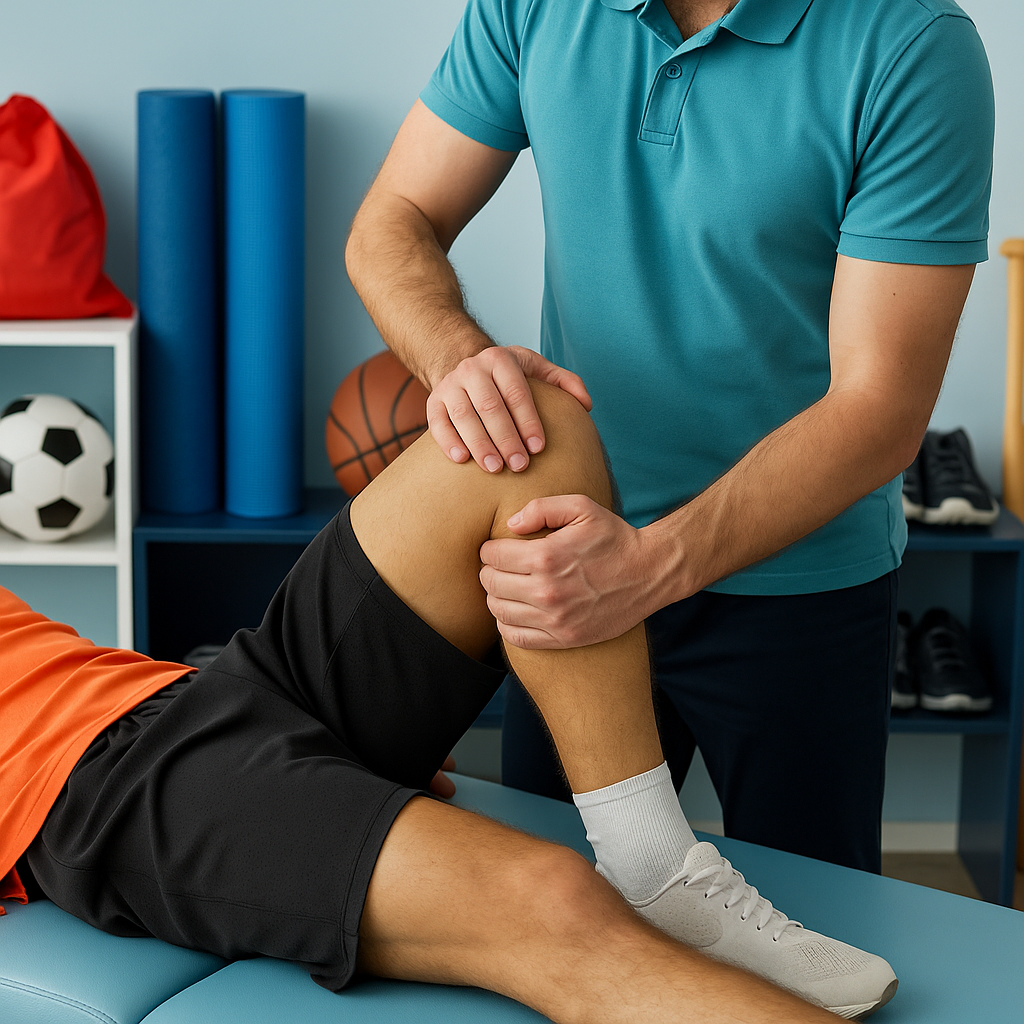Athletes and active people often experience injuries. Sports medicine specialists are helpful in diagnosing and treating these injuries, helping individuals recover and get back to their routines. Here’s an overview of typical injuries they treat and what you need to know about each:
What Is a Sprain?
A sprain occurs when ligaments, the tissues that connect bones, are stretched or torn. These injuries may affect the ankle, knee, or wrist. Sprains can range from mild stretching to complete tearing of the ligament. They happen due to falling, twisting, or impact during sports or physical activities.
Symptoms include pain, swelling, and limited movement near the affected joint. Mild sprains might only need rest and ice, while severe sprains require medical attention. Treatment by sports medicine specialists may involve physical therapy, and in serious cases, surgery to repair the damaged ligaments.
How Do Strains Occur?
Strains, also called pulled muscles, occur when muscle fibers or tendons are stretched or torn. They often happen due to overuse or improper movement during exercise, especially in the back, hamstrings, or shoulders. Strains can develop suddenly or gradually, depending on the activity.
Recovering from a strain depends on how severe the injury is. Minor strains might heal with rest, ice, and stretching, while more serious ones may need a structured rehabilitation plan. Sports medicine specialists may suggest treatments like deep tissue massage, targeted exercises, or advanced therapies, such as ultrasound, to help speed recovery.
What Are Stress Fractures?
Stress fractures are tiny cracks in the bones caused by repetitive force or overuse. They are typical in athletes such as runners, gymnasts, and dancers. These fractures can occur in areas like the shins, feet, and hips. People with stress fractures may experience pain that worsens with activity and gets better with rest.
Dislocations happen when the ends of bones are pushed out of their normal positions within a joint. Typical sites for dislocations include the shoulders, elbows, and fingers. Falls, direct hits, or awkward twisting motions during sports can cause these injuries.
What About Tendon Injuries?
Tendons, which connect muscles to bones, are prone to overuse injuries. Conditions like tendinitis develop when tendons are irritated or degenerate over time due to repetitive strain. Affected areas include the Achilles tendon, the elbow (tennis elbow), and the shoulder (rotator cuff). Tendon injuries often result in pain, swelling, and stiffness around the affected area. Managing these conditions requires careful guidance from a sports medicine specialist.
How Are Injuries Prevented?
Preventing injuries involves a blend of preparation, technique, and self-awareness. Sports medicine experts often stress these practices to reduce the risk of getting hurt during physical activity:
- Warm up properly before exercise to get your blood flowing and muscles ready.
- Use appropriate gear such as supportive shoes or protective padding.
- Focus on proper form, especially during strength training or high-impact sports.
- Take regular breaks to avoid overuse injuries.
By following these guidelines, athletes maintain a balance between performance and safety, keeping their bodies in good condition.
Ask About Sports Medicine
Recovering from sports-related injuries doesn’t always mean doing it on your own. Pain, swelling, or mobility issues lasting more than a few days could signal a more serious condition needing professional care. Early treatment may lower the risk of complications and speed up the healing process. Whether it’s through supervised physical therapy, advanced treatments, or preventive strategies, working with a specialist guides you.

Leave a Reply